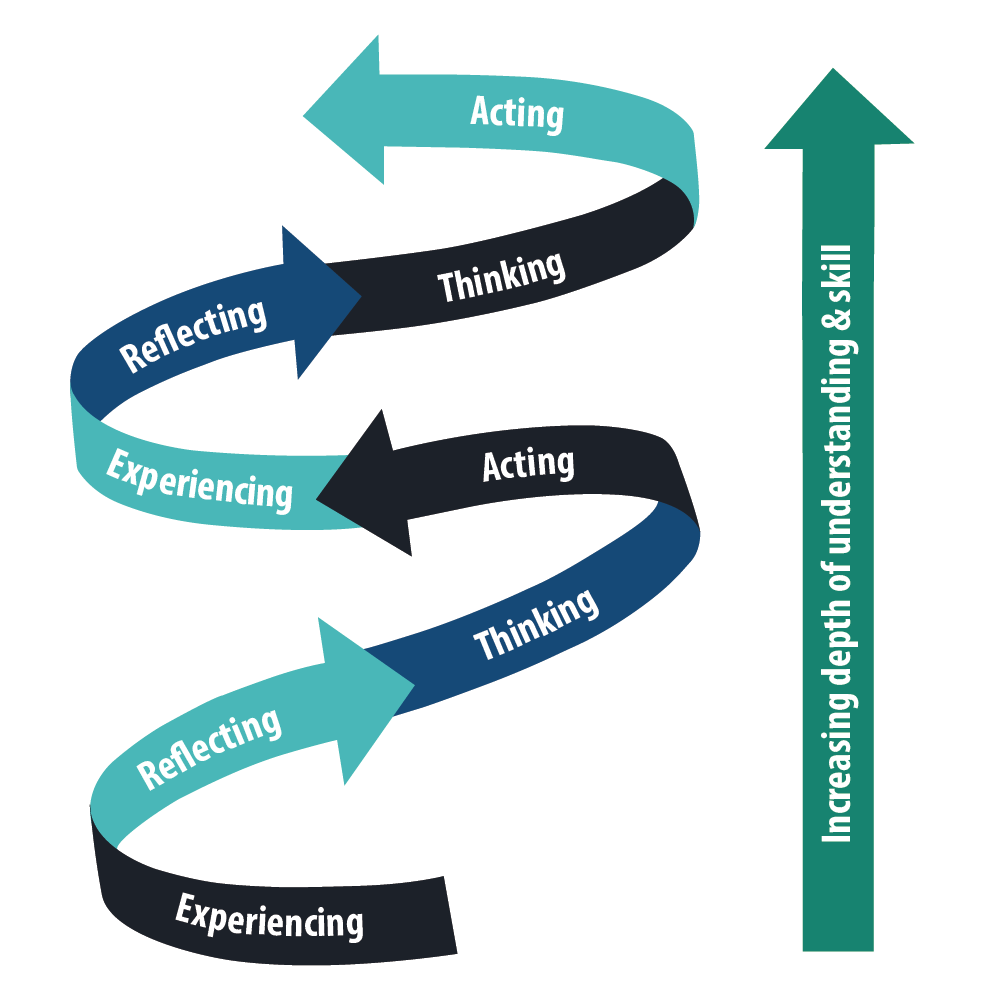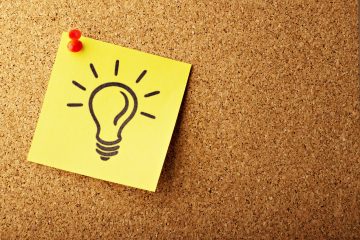This is the second post in a series on experiential learning. See Part 1 here.
The experiential learning theory is a well-used, well-known theory with applications in nearly all forms of teaching and learning, from its six propositions (see Part 1 of this series to learn more) to its in-depth theory on learning styles (as will be discussed in a future article). But, sometimes, it’s best to keep things simple. That’s certainly the case when it comes to experiential learning and its basic, four-step cycle: experiencing, reflecting, thinking, and acting.
Why the Cycle?
When discussing the six propositions of experiential learning, propositions 1 and 2 state that “learning is best conceived as a process, not in terms of outcomes,” and “all learning is relearning.” These first two propositions emphasize the importance of learning as a continuous cycle.
The learning cycle goes like this:
1) The student engages in a new experience.
2) The student reflects on that new experience using their current knowledge as a basis.
3) This reflection leads to new ideas or understanding of this experience.
4) These new ideas lead the student to act and test their new understanding on the world around them. This, of course, leads to a new experience, and the cycle starts all over again.

The further along this cycle the student goes, the deeper their understanding will grow, as will their skill.
Keys to Implementing the Cycle
As an instructor, most of your influence within the cycle lies within the “experience” portion of the cycle. With this in mind, there are three things that should characterize every experience.
Significant: Experiences should not occur for experience’s sake. No, an experience must be relevant and significant to the learning process at hand.
Challenging: Experiences should not be easy. Optimally, these experiences should encourage creativity and effort for the student to properly engage with and learn from.
Satisfying: Experiences should be satisfying, not just in the immediate experience, but in the ability to build on the experience again in the future to create greater success.
As an instructor, organize your curriculum so that it is built off a series of learning cycles. As you go deeper, you can also go wider, expanding students’ understanding in both complexity and application. This can take the form of projects, case studies, student teaching, service learning, or other interactive activities. This is where students will begin to experience the moment of epiphany: a moment that is only possible because of the work put into preparing for that opportunity of understanding.
Despite being simple on its surface, the experiential learning cycle can be difficult to incorporate in a classroom. However, when done so, it can be incredibly beneficial to a student—not just in what they learn but in teaching them how to learn it. Done well, experiential learning provides a lesson that will follow a student their whole life
Sources
Alice Y. Kolb. “What Is Experiential Learning?” Institute for Experiential Learning, October 22, 2021. https://experientiallearninginstitute.org/resources/what-is-experiential-learning/.
Fawcett, Stanley E, Francois Charles Giraud-Carrier, and Amydee M Fawcett. “Using Deliberate Practice to Transform Learning Culture: Helping Students Put Real Skills in Their OSCM Toolbox.” Decision Sciences Journal of Innovative Education 18, no. 2 (April 2020): 172–98.
David A. Kolb. (1984). Experiential Learning: Experience as a Source of Learning and Development. Upper Saddle River, NJ: Prentice-Hall, Inc.
Passarelli, Angela and David A. Kolb. “Using Experiential Learning Theory to Promote Student Learning and Development in Programs of Education Abroad.” Student Learning Abroad. Sterling, VA: Stylus Publishing.
Kolb, Alice and David A. Kolb. “Eight Important Things to Know about the Experiential Learning Cycle.” Australian Educational Leader 40, no. 3 (2018).


